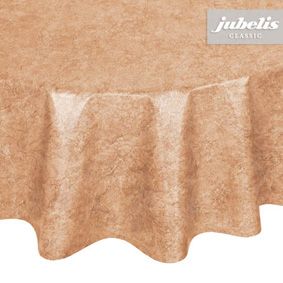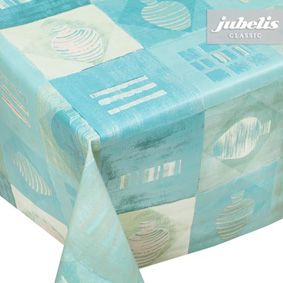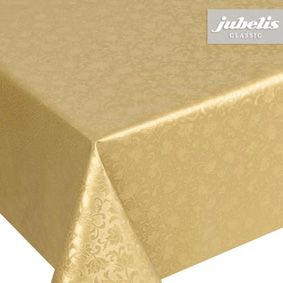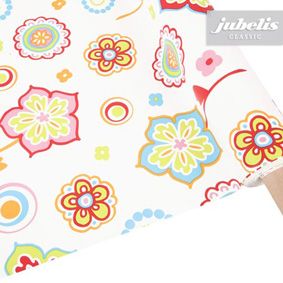Tips for the cleaning and care of table linen
Washable tablecloths and tablecloths made of film are robust so that they are as dirt-repellent as possible and easy to clean. The service life of a PVC tablecloth depends on its quality and the stress it is exposed to over the course of its lifetime. Most can be cleaned with only a wet wipe. For stubborn stains, a little dishwashing liquid or cleaning agents may help. A textile tablecloth can be washed with other items of dirty laundry.
Washable table coverings
If necessary, oilcloth tablecloths can be washed by hand with a mild detergent in the tub. Hang them to dry without wringing when still dripping wet so that they can dry whilst suspended without getting any wrinkles or fractures. Don't use the washing machine as there is the risk that cracks may form.
For heavily soiled oilcloths, water diluted with Viennese lime is highly recommended. The non-toxic mixture of kaolinite and ground quartz should be applied without too much pressure on the coated surface and then removed thoroughly with clean water.
Oilcloth is often used as an underlay during handicrafts or DIY projects. Sometimes unsightly adhesive residues may remain on the surface. These can be easily shifted with a little grease remover sprayed on a cloth.
The surface of an oilcloth can cope with wetness without any problems. However, long-term exposure to sunlight can cause colours to fade and cracks to appear in the cloth. High-quality wax cloths have an appropriate surface coating which is dirt and water-repellent.
Easy-care tablecloths with washable surface




The cleaning of textile tablecloths
Textile tablecloths are more sensitive and stains cannot be wiped away so quickly and easily. The only answer is to wash the tablecloth in the washing machine. Modern fabrics are generally cleaned at 30 or 40 degrees.
Pure, natural or dyed linen must be washed at 60 to 95 degrees. However, a lot of water is needed so that the fibres of the linen can swell. This means that the washing machine should only be half full. Water-saving wash cycles are unsuitable. Ironing should be done when the cloth is in a slightly moist state at high heat because linen tends to wrinkle. Modern fabrics often do not need to be ironed.
Tips for stain removal
Stains should be remedied immediately whenever possible. Use a damp, white cloth to gently blot the stain, you should never rub it out.
Coffee and tea stains can be removed with glycerol. During the subsequent wash, you could add some ammonia.
When it comes to dealing with lipstick marks on cloth napkins, alcohol or ether can be a great help. Afterwards, the cloth napkins should be immediately washed according to their instructions.
Grease stains are treated with some gasoline, trichloroethylene, stain remover or a solvent and then sprinkled with talc to avoid rough edges. After drying, brush the fabric thoroughly but gently, and then wash immediately.
Wine and fruit juice stains that are commonly encountered should be treated as possible with salt dissolved in lemon juice. This should be followed with a quick wash.
Wax stains can be easily removed from the fabric by carefully placing a hot iron over the spot with a piece of kitchen roll acting as a barrier. This works because the liquid wax is absorbed by the paper towel.
Before using stain removers, petrol, solvents or the like, it is always a good idea to test them on an inconspicuous area first to see how the substance will react.
